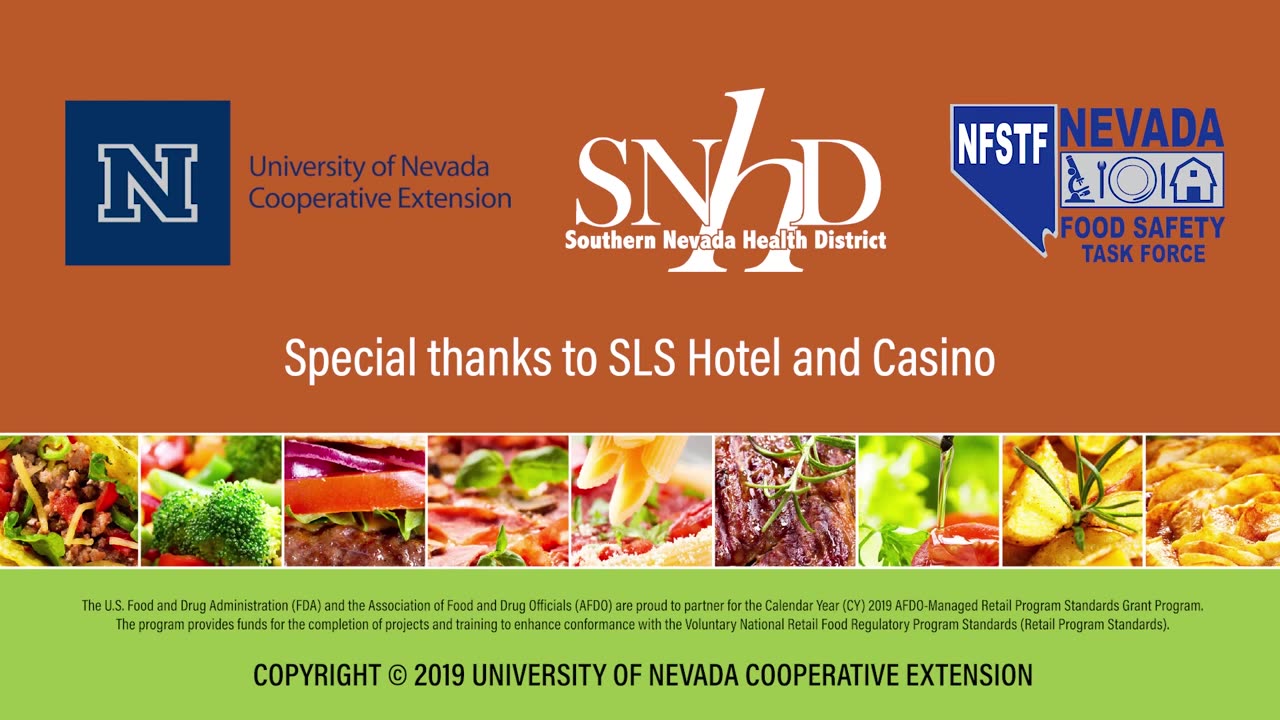Premium Only Content

Module 7 — Thermometer Calibration and Verification
### **Module 7: Thermometer Calibration and Verification**
Accurate temperature measurement is critical in food safety to ensure that food is cooked, stored, and held at the correct temperatures. Regular calibration and verification of thermometers are essential for reliability and compliance with food safety standards.
---
### **1. Importance of Thermometer Calibration**
- **Ensures accuracy**: Provides precise readings for safe cooking, cooling, and storage.
- **Prevents foodborne illnesses**: Helps maintain safe temperatures that inhibit bacterial growth.
- **Meets regulations**: Compliance with food safety guidelines requires accurate thermometer use.
---
### **2. Types of Thermometers Used in Food Safety**
- **Bimetallic dial thermometers**: Common for checking internal temperatures of foods.
- **Digital thermometers**: Provide fast, accurate readings for a variety of applications.
- **Thermocouples**: Used for quick temperature checks in professional kitchens.
- **Infrared thermometers**: Measure surface temperatures without direct contact.
---
### **3. When to Calibrate Thermometers**
- **Before first use**: Always calibrate a new thermometer before using it.
- **Regular intervals**: Perform calibration at least weekly or as recommended by manufacturers.
- **After extreme temperature exposure**: Following usage in very hot or cold environments.
- **If dropped or damaged**: Physical impacts can affect accuracy.
- **When readings are questionable**: Check calibration if the thermometer shows inconsistent or unusual readings.
---
### **4. Methods of Calibration**
#### **A. Ice Water Method (Recommended for most thermometers)**
1. Fill a glass with crushed ice and add enough water to make a slushy mix.
2. Insert the thermometer probe into the center of the mixture, avoiding contact with the sides or bottom.
3. Wait until the reading stabilizes.
4. Adjust the thermometer to read **32°F (0°C)**, if adjustable.
#### **B. Boiling Water Method**
1. Boil clean water in a pot or kettle.
2. Insert the thermometer probe into the boiling water, avoiding contact with the pot's sides or bottom.
3. Wait until the reading stabilizes.
4. Adjust the thermometer to read **212°F (100°C)**, considering altitude adjustments if necessary.
---
### **5. Verification of Thermometers**
- **Use a reference thermometer**: Compare readings with a certified, accurate thermometer.
- **Cross-check readings**: Use multiple thermometers on the same food item or liquid.
---
### **6. Recording Calibration Results**
- Maintain a **calibration log** that includes:
- Date and time of calibration.
- Method used (ice water or boiling water).
- Initial reading and adjustments made.
- Name of the person performing the calibration.
---
### **7. Best Practices for Using Thermometers**
- Clean and sanitize thermometer probes before and after each use.
- Insert the probe into the thickest part of the food, avoiding bones, fat, or gristle.
- Wait for the reading to stabilize before recording the temperature.
- Use the correct thermometer for the specific task (e.g., digital thermometers for liquids, bimetallic for roasts).
---
### **8. Troubleshooting Thermometer Issues**
- Replace batteries or charge digital thermometers if not functioning.
- Check for physical damage or corrosion on probes and connections.
- Retire thermometers that consistently fail calibration.
---
### **9. The Role of Calibration in Food Safety**
- **Critical for HACCP compliance**: Ensures monitoring and verification of critical control points.
- **Reduces risks**: Accurate readings help maintain safe cooking and storage conditions.
- **Builds trust**: Demonstrates a commitment to food safety and quality.
---
### **Conclusion**
Regular calibration and verification of thermometers are vital for ensuring accurate temperature control in food safety. By following proper calibration methods and maintaining consistent practices, food handlers can protect consumers, ensure compliance, and maintain the quality of food products.
-
 40:32
40:32
Man in America
11 hours agoRockefeller Medicine COLLAPSES as God's Natural Healing Takes Over w/ Angie Tomky
36.1K11 -
 2:03:30
2:03:30
Nerdrotic
8 hours ago $4.87 earnedMysteries of Egypt with The Brothers of the Serpent | Forbidden Frontier #087
41.7K3 -
 2:29:27
2:29:27
vivafrei
16 hours agoEp. 245: Los Angeles ON FIRE! Gavin Newsom FOR JAIL? Trump SENTENCED! Pardons & MORE! VIva & Barnes
182K264 -
 5:32:42
5:32:42
Nobodies Live
7 hours ago $3.76 earnedNobodiesLive - Rumble Music TEST STREAM 2.0
56.9K2 -
 3:40:10
3:40:10
EricJohnPizzaArtist
6 hours agoAwesome Sauce PIZZA ART LIVE Ep. #30: Classic Gaming!
39.5K6 -
 1:18:42
1:18:42
Josh Pate's College Football Show
7 hours ago $0.58 earnedSEC Dominance Over | National Title Thoughts | Miami QB & DC Moves | Wrong About the Playoff?
31.7K4 -
 LIVE
LIVE
Vigilant News Network
12 hours agoIvermectin & Fenbendazole Cancer Secrets Revealed w/ Dr. William Makis | Media Blackout
1,277 watching -
 4:17:11
4:17:11
GamerGril
10 hours agoPRACTICE THOSE DROP KICKS | DEAD ISLAND 2
64.2K11 -
![Super Smash Bros Ultimate - Adventure Mode [Part 2]](https://1a-1791.com/video/fwe2/d9/s8/1/B/p/i/F/BpiFw.0kob-small-Super-Smash-Bros-Ultimate-A.jpg) 6:06:11
6:06:11
JdaDelete
13 hours ago $5.60 earnedSuper Smash Bros Ultimate - Adventure Mode [Part 2]
75.6K4 -
 3:53:21
3:53:21
GlizzyPrinceChristian
1 day agoThis Game Literally is a Master Piece of Terrible Acting But the Combat is Good
76.8K